Honing a Blade Holder Tutorial
This tutorial shows a simple way to hone out a blade holder. This is needed when using an Ultrasabers blade with a blade holder from TCSS.
Materials:
Drill Press (recommended) or hand drill
Shopvac
Eye, ear, and hand protection
Cylinder hone from McMaster-Carr
The hone you'll want to get is from http://www.mcmaster.com
When at the site, search for part number 4424A24
Quick shot of everything you need. The gloves were around $10 at Home Depot, I recommend getting something like them. The shopvac isn't pictured.
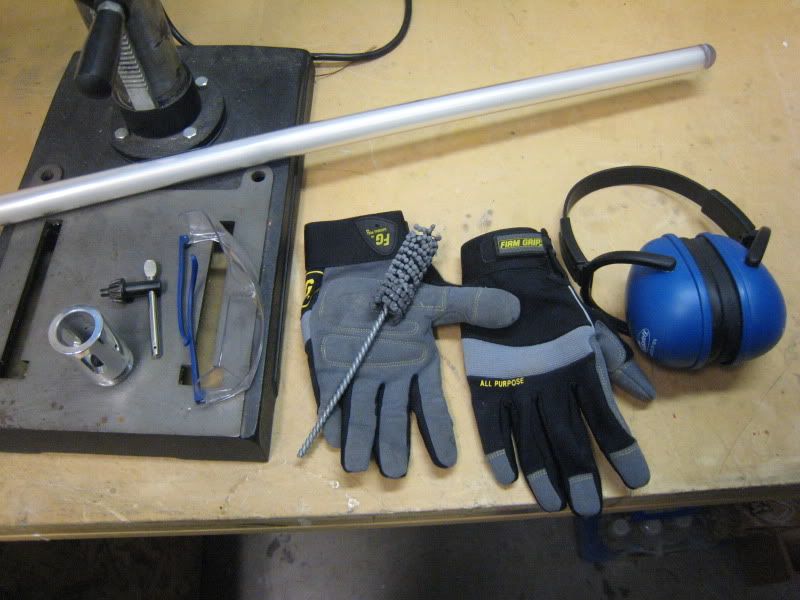
Make sure your drill press is on the lowest speed setting it has. Mine goes down to 640 rpm. Do not use a drill press if you can't make it spin below 1000 rpm.

Chuck the cylinder hone and then slide your blade holder onto it. Make sure that any screws are removed from the blade holder before honing.

Now comes the tricky part. With one hand you will want to hold the blade holder and hose from the shopvac. The vacuum will suck in all the metal dust and keep the part cool while honing. This means you don't have to wash the part afterwords, and the part doesn't heat up while honing.
Turn the vacuum on, then the drill press. When honing, keep two hands on the blade holder at all times. Only remove a hand to turn the press on and off.

Check fitment every few minutes. Soon enough, your blade will fit perfectly.

If you don't have a drill press available, this method can be used with a hand drill. Put the drill on the lowest speed setting. Have someone hold the drill and then you hold the part and vacuum. It's the same basic process.
Thread Tapping Tutorial
First off, the tools.
[color=Red][b]Required:[/b][/color] A thread tap (and the drill bit that comes with one). These come in many different thread pitches. Ultra uses 8-32 threading for his blade retention screws. If you strip out that screw, go to 10-32 thread pitch.
This is a picture of a tap and the drill bit it uses.
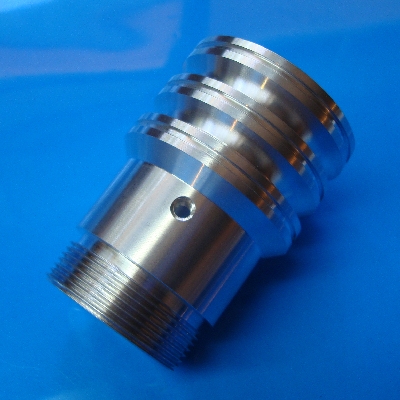
Some kind of power drill. A drill press is HIGHLY RECOMMENDED, because with hand drill, you risk the bit wandering.
[color=Red][b]Optional, but HIGHLY recommended:[/b][/color] Tap handle. The tap handle holds the tap, like the chuck on a drill holds the bit. The handle allows you to keep the tap at 90 degrees, and gives you plenty of torque. You can tap without the handle, by using pliers to hold the tap. This isn't recommended though, and come on, the handle is all of 6 bucks. DO NOT USE A DRILL PRESS FOR THE TAPPING. YOU WILL DESTROY YOUR TAP.
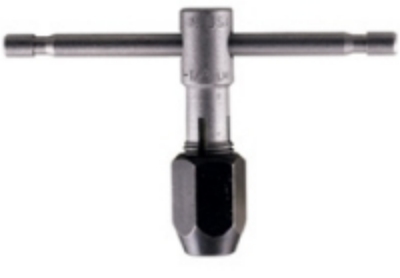
[color=Red][b]The Idiot Proof Steps To Tapping[/b][/color]
1) Secure the drill bit that comes into your drill. A drill press is HIGHLY recommended.

2) Secure the work piece. A drill press vice is HIGHLY recommended.

3) Drill the hole. Make sure you drill at the peak of the hilt's curve, otherwise, you will have a crooked hole.


4) Clean out the hole, make sure that no metal scraps are still in the hole.
5) Attach the tap to tap handle. DO NOT USE DRILL PRESS INSTEAD OF A TAP HANDLE. YOU WILL DESTROY YOUR TAP AND HOLE.
6) Begin tapping the hole. You want to turn the tap handle 1/4 to 1/2 a rotation, and then back it out to remove material. Using lubrication during this step is highly recommended. DO NOT just tap the entire hole without backing out the tap. You run the risk of breaking that tap, and even if you don't, you will have a very poorly threaded hole.

7) Run the tap through the hole one last time, just to make sure it is threaded well. Clean out any metal shavings still in the hole. A can of compressed air works well here.

8 ) Thread your screw into the hole. Make sure you have the same thread pitch screw as hole. Otherwise, it won't work.
9) Enjoy your beautifully threaded hole ![]()
Here is a good drill bit-tap reference chart.
8-32 is M4x0.7.
6-32 is M3.5 x .06.
10-32 (I'm assuming that's "UNF") is M5 x .08.
4-40 is M3 x .05.
Here is a complete chart. Credit goes to Wikipedia.

Another formula is: to find the right size drill bit for the tap subtract the thread pitch from the screw size. Example: M5 screw with a .7 thread pitch would require a 4.3 drill bit.
Soldering Wires to a PCB/soundboard
This tutorial will show you the basics of soldering a wire to any kind of PCB. For our purposes, it's usually a sound board.
* First, gather your materials. You'll need a pair of wire strippers, diagonal cutters, solder, and a solder iron

Strip your wire. Only strip 1/8" off or so, no more than the length of the solder pad.

Tin the wire.

Tin the solder pad on the sound board. Don't keep the iron on the pad for too long, this should only take a few seconds. Apply heat to the pad and put the solder on, just like tinning a wire.

Time to solder the wire to the board. Add no more solder, just put the iron on it. Again, this should only take a few seconds.
IMPORTANT NOTE: Don't put the wire through the hole in the sound board. Lay it across the top of the solder pad.


Video: http://www.youtube.com/watch?v=n1Q2gcR81R0
Done!
submitted by: Aluke123
How to solder wires together
In regards to soldering irons.. Any iron will work really. I use a temperature controlled model from Tenma. My backup is a radioshack iron which works fine, too. If you plan on building a lot of sabers, get a nicer iron that heats up fast.

First, gather your materials. Wire strippers, diagonal cutters, heatshrink, solder, lighter (or heat gun), and soldering iron.
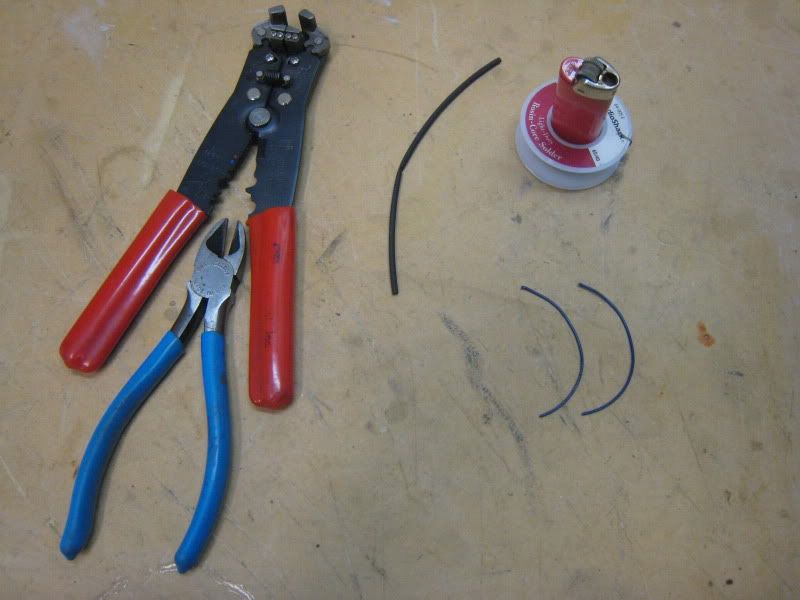
Strip both your leads. Take about 1/4" of the insulation off.

Tin the wires. Touch the iron to the wire along with the solder. It should only take a few seconds of contact for the solder to melt and flow over the wire. You should tin BOTH wires.
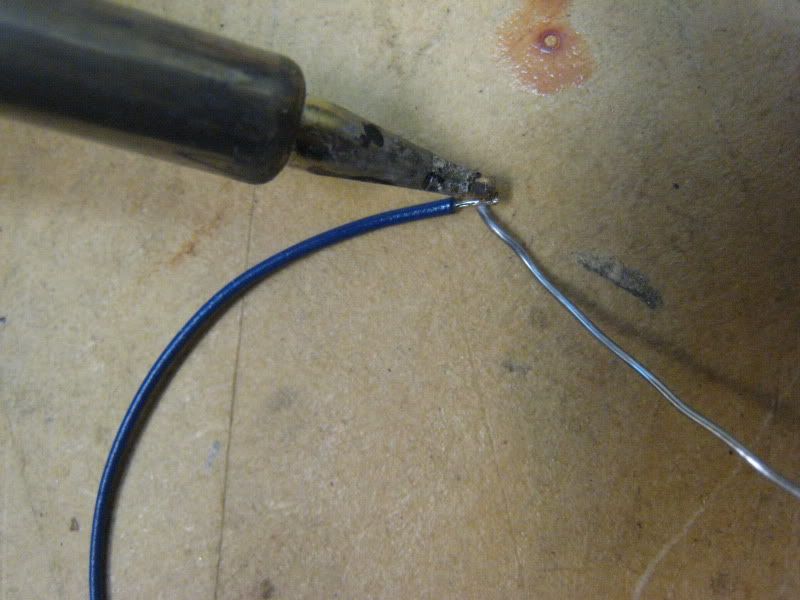
Now it's time to solder the leads together. Slide heatshrink on before you solder, unless one end remains free when you're done. To solder the wires, just touch them together with your iron. Don't add any more solder, the tinning added all you'll need.
IMPORTANT: Tug test the wires when you're done soldering, to be sure that it's a firm joint.
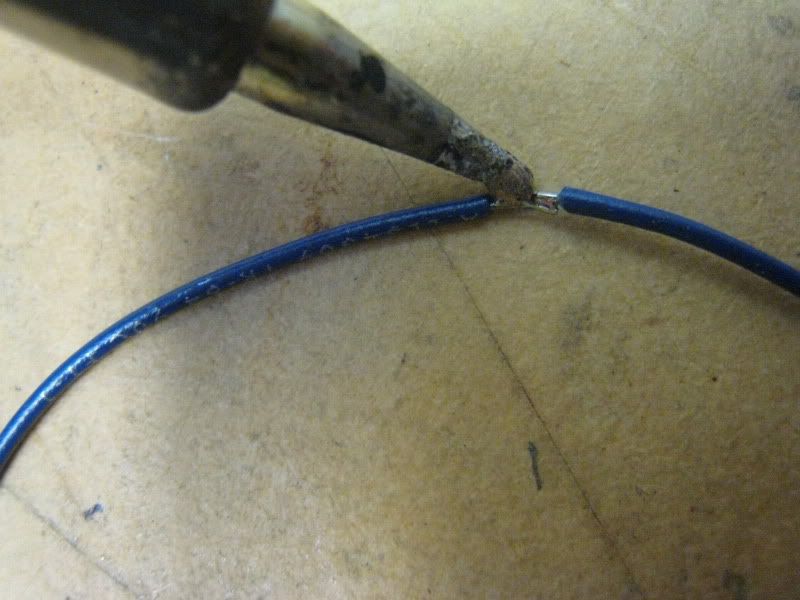

Now slide the heatshrink over the wires. Cut about 1/2" of it.

Shrink the heatshrink tubing down with a lighter. Heat with the blue of the flame so that you don't burn the tubing.

Video: http://www.youtube.com/watch?v=LKvGbEqQTEg
Done!